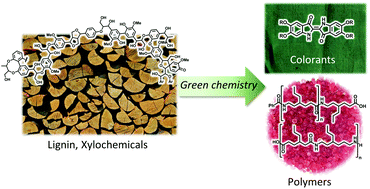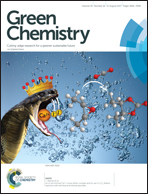Abstract
Against the backdrop of modern sustainable chemistry and valorization of biomass for chemical raw materials, the syntheses of indigo dyes and polyamides as representatives of two classes of everyday chemical products based on xylochemicals are described. Wood-derived starting materials were transformed into functional materials using the principles of green chemistry to expand the scope of products gained from renewable resources. The indigo dyes were synthesized in a short, straightforward sequence starting from vanillin. Two polyamides, representatives of an important class of polymers, were obtained from 4-propylcyclohexanol, which is one of the longest known (and most abundant) hydrogenative depolymerization products of lignin.



 Please wait while we load your content...
Please wait while we load your content...